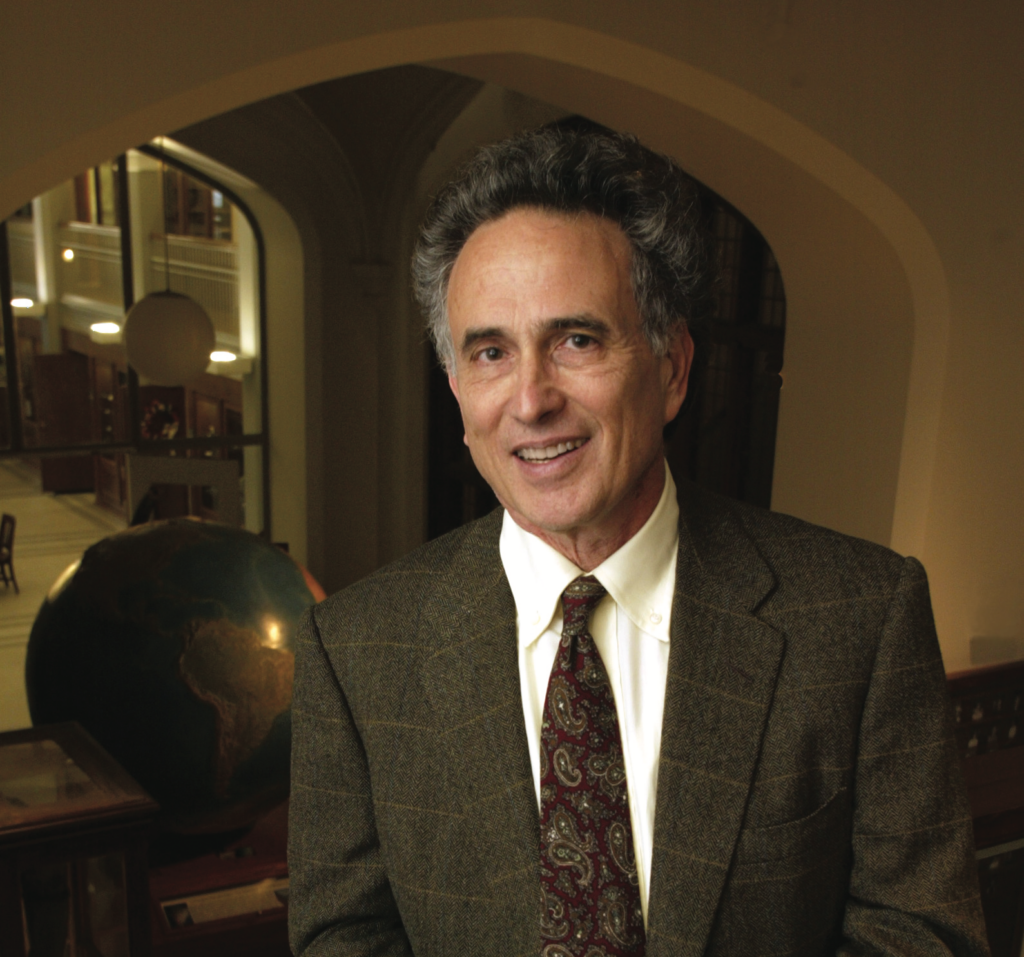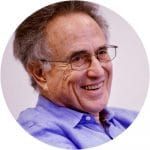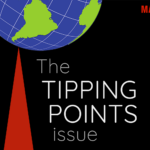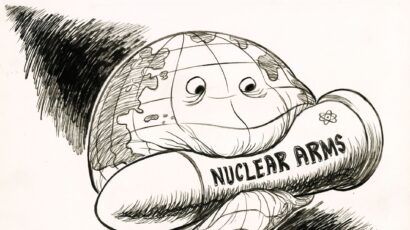Destiny science for the Anthropocene
By Robert Socolow | January 19, 2024
 Robert Socolow
Robert Socolow
Editor’s note: Robert Socolow is a co-winner of the 2023 John Scott Award, the oldest award for science in the United States. John Scott, a pharmacist in Scotland, expressed his admiration for Benjamin Franklin by a bequest to the town fathers of Philadelphia, received in 1816. A copper medal and a prize have been awarded almost every year since then, including to Marie Curie (who received this award in 1921 for the discovery of radium) and Thomas Edison (1929, “numerous inventions”). Socolow shared this award with climate scientist Michael Mann. Socolow gave a brief talk on November 30 in Philadelphia at the awards ceremony, from which this essay is derived.
A distinctive feature of our collective future is that we are modifying our planet substantially, and to our detriment, by doing ordinary things. This new era is frequently referred to as the Anthropocene, in recognition that the Earth has entered a new period in which the effects of human activity on the planet (on temperatures, rainfall, the melting of ice…) have become comparable to the effects arising from nature’s intrinsic variability. Until recently, humans had only puny impacts on the world as a whole. From here on, it will take a conscious effort to fit humanity on the Earth. The Anthropocene is generating its own subfield of science, which hasn’t had a name, so I’m giving it one here: “destiny science.” It is science that explores the collective future of humanity.
Destiny science, accordingly, is global, and it includes both people and the planet. Destiny science has a mission: It seeks to anticipate future environmental change and to slow down that change. The objective is to ensure that future humans can continue to handle climate change as it arrives and need not become so preoccupied with climate change that they are unable to attend to their other priorities, like economic development, at the same time. Those working on destiny science develop what I call a planetary identity. It doesn’t matter from what country any carbon dioxide is emitted; it all gets well stirred in the atmosphere. Working on destiny science requires subordinating one’s national loyalties and thinking like an Earthling.
Three benchmarks place the onset of the destiny science around 1957-58, just 65 years ago. 1) the International Geophysical Year was 1957-58; it was the first globally coordinated campaign to study the Earth. 2) A Russian satellite named Sputnik first orbited the Earth in November 1957; human beings began taming outer space. 3) Charles David Keeling made his first measurements of the atmospheric carbon dioxide concentration on Mauna Loa in Hawaii in March 1958, revealing, soon after, a relentless climb in the concentration due to human activity.
Over the following decade or so, humanity was jolted by pictures of Earth from space that carried the message that humans are alone in the universe and have a planet to take care of. I loved that this message was based in science, that it was global, and that it was moral. In that same period, a bumper sticker arrived: “Science for the People.” My cohort of physicists connected with that bumper sticker. I began scoping what are called, optimistically, “solutions” to climate change—strategies for slowing down climate change that inevitably bring their own fateful risks. For the previous decade, I had been working on quarks. After the summer of 1969, for me, quarks were out, and the Earth was in.
Permit me, please, to describe briefly two subfields of destiny science to which I contributed. The first is energy conservation. We humans were wasting energy big-time in the 1970s, and it seemed obvious to quite a few of us that it would be productive to figure out how people could use less energy. I remember being told to back off. “You’re a scientist: find us new energy sources, and let people use energy however they wish!” Instead, with colleagues, I launched a multiyear field study of the heating and cooling of already built residences. At our research site, Twin Rivers, New Jersey, architects, engineers, psychologists, and statisticians investigated building design and construction, as well as homeowner behavior. We were evaluating what actually happens and comparing it with what is supposed to happen.
This isn’t a popular thing to do. Governments don’t like to evaluate their programs, and architects are often rewarded for design rather than performance. Before long, energy-efficient buildings became a subfield of its own, with major programs in our national laboratories. As a result of both research and policy innovation, refrigerators and windows became more efficient, and entirely new lighting technologies ended the domination of Mr. Edison’s tungsten-filament light bulb. Also, cars lost their tailfins and doubled their fuel economy. A new paradigm emerged that focused on providing not energy but “energy services,” including comfort, privacy, mobility, interactivity, and safety.
In the late 1980s another subfield of destiny science emerged, called industrial ecology. It investigates the reuse and recycling of materials. I began looking into the industrial ecology of carbon. This time, I would follow carbon flows, rather than energy flows. Soon after, with my ecologist colleague, Steve Pacala, I introduced the concept of “stabilization wedges,” each wedge being a quantified 50-year deployment of a low-carbon strategy already widely known. A wedge of automobile efficiency. A wedge of wind substituting for coal. A wedge in which carbon dioxide emissions are prevented from reaching the atmosphere and sent instead deep underground. Ours was the “already” paper. It brought a message of hope, countering the common perception at the time that we humans were simply incapable of slowing down climate change. Rather, we said, the job is to build out a portfolio of familiar technologies. Activists, now more self-confident, began to promulgate stringent climate-respectful global targets—caps at specific future dates on total emissions of greenhouse gases or on the Earth’s average surface temperature.
The spirit of physics inhabits the wedges model. Physics promotes a search for minimalist, idealized frameworks that capture the key features of a problem, using so-called “back of the envelope” reasoning. The wedges model does that.
Looking ahead, here are two urgent tasks for destiny science. The first is to help the world reconcile the claim of urgency and the claims of what I call “conditionality.” On the one hand, the threat of severe climate change is credible and calls for decisive action. On the other hand, everyone wants to place conditions on that action, and these conditions have much merit. Don’t expand nuclear power until the world has moved away from nuclear weapons; close down the fossil fuel industries because they have such a powerful vested interest in the status quo; preserve beloved landscapes and seascapes from invasions of wind turbines and solar panels; don’t infringe on how consumers use energy; avoid geoengineering because it is ungovernable. Especially for young people, the conditions that must be met are about justice: It cannot be acceptable to slow down climate change, they say, unless at the same time the world becomes less unequal. A paramount question for the next decade is whether human beings can tackle climate change effectively with so much conditionality.
A second assignment for the next decade is to improve the communications of destiny science so that it becomes more widely trusted by those in the political middle. Indeed, unless those in the political middle strongly support the policies that effectively mitigate climate change, these policies will come and go with changes of governments. A broader consensus in favor of vigorous action can emerge, I think, if more people feel that they are hearing a full story. A place to start would be to convey that climate scientists do not know how fast bad outcomes will arrive, because the Earth, so far, has revealed so little about its tipping points. The current uncertainty, properly conveyed, would build support for climate-driven investments, I think, because human beings are risk-averse and routinely invest in protection against bad outcomes. Climate science is still a young field. As we learn more, we may be able to rule out some of the most fearsome outcomes and allow ourselves to work less hard.
Pursuing destiny science to help us fit on the Earth is an open-ended project that is just beginning. The broader community of natural scientists, applied mathematicians, and engineers is likely increasingly to prioritize research in climate science and climate solutions. This, in turn, will steadily increase the number of talented junior and senior researchers who commit to these problems and bring to bear currently unforeseen research strategies. Out of such ferment, a safer planet can—and must—come.
Together, we make the world safer.
The Bulletin elevates expert voices above the noise. But as an independent nonprofit organization, our operations depend on the support of readers like you. Help us continue to deliver quality journalism that holds leaders accountable. Your support of our work at any level is important. In return, we promise our coverage will be understandable, influential, vigilant, solution-oriented, and fair-minded. Together we can make a difference.
Keywords: Anthropcene, John Scott Award, destiny science, essay
Topics: Climate Change
















Socolow pushes an elegant balance of speculative and contradictory proposals that actually encourage a net zero of commensurate action to control climate destabilization. No surprise there.
Human beings may be ‘risk averse’ in some contexts. But in our time the terror of knowing that only fundamental change in the ‘ordinary things’ is reasonable for dealing with climate change has resulted in this bizarre ‘Post Truth Era’ where denial had become main stream.
I feel that “Destiny Science” should also include a shift in global culture, particularly here in Western culture. As an anthropologist, I must admit that our “tool use”, i.e. technology, has been a large part of our species downfall. We have not put it to good use, and we are too far removed from living in balance with nature as our ancestors did. This Western culture of artificial, disposable, plastic, electronic and virtual reality is our demise. As is consumerism culture which as we all know is not sustainable. Sadly Third World/Developing Nations look at our “American Dream” and try… Read more »
Back to the caves then?
Professor Socolow’s “Destiny Science” thesis follows along the lines of Dr. Maja Göpel’s 2016 book The Great Mindshift which states: “Given the structural reality of today’s path dependencies, the foremost strategy for successive change in this direction—the incremental strategies that can achieve it—is double-decoupling: 1. Decouple the production of goods and services from unsustainable, wasteful or uncaring treatment of humans, nature and animals (do better). 2. Decouple the satisfaction of human needs from the imperative to deliver ever more economic output (do well).” “To create untried beginnings we need new social imaginaries, sets of ideas including values, institutions, laws and… Read more »